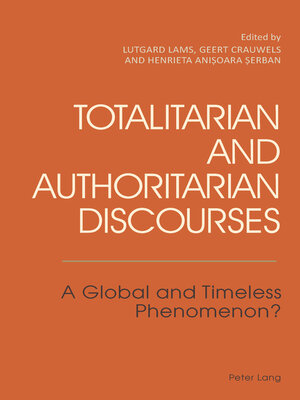
Sign up to save your library
With an OverDrive account, you can save your favorite libraries for at-a-glance information about availability. Find out more about OverDrive accounts.
Find this title in Libby, the library reading app by OverDrive.



Search for a digital library with this title
Title found at these libraries:
| Library Name | Distance |
|---|---|
| Loading... |
This volume offers a comparative analysis of the functioning of totalitarian and authoritarian discourses and their aftermath. Whereas other studies often focus on communist/post-communist examples and hence particularize totalitarian discourse, this book starts from a more encompassing theoretical perspective, transcending the limitation of totalitarian discourse to its communist constituent.
The case studies presented in this volume thus provide a more differentiated analysis of discursive strategies in totalitarian and authoritarian regimes across the globe, including the former East Germany, former Yugoslavia, Romania, Lithuania, China, North Korea, the Philippines, Burma, Cuba and Tunisia. In addition to this geographical range, these studies also undertake new research into different eras, enabling comparison between past and present discourses. The findings are presented in three interconnected sections dealing with culture and education, media and official discourse, and power structures and politics. The extended scope of the case studies reveals the universal characteristics of totalitarian/authoritarian discourses over space and time.
The case studies presented in this volume thus provide a more differentiated analysis of discursive strategies in totalitarian and authoritarian regimes across the globe, including the former East Germany, former Yugoslavia, Romania, Lithuania, China, North Korea, the Philippines, Burma, Cuba and Tunisia. In addition to this geographical range, these studies also undertake new research into different eras, enabling comparison between past and present discourses. The findings are presented in three interconnected sections dealing with culture and education, media and official discourse, and power structures and politics. The extended scope of the case studies reveals the universal characteristics of totalitarian/authoritarian discourses over space and time.







